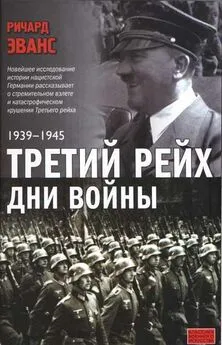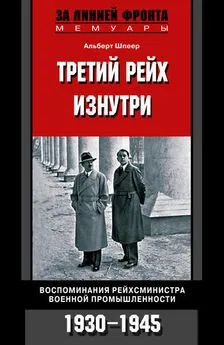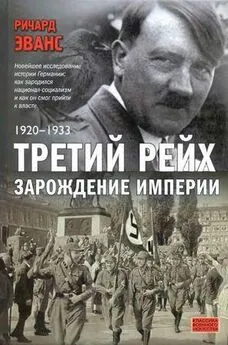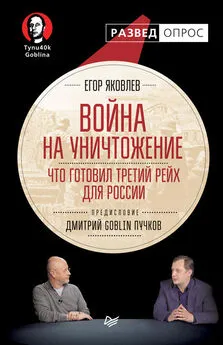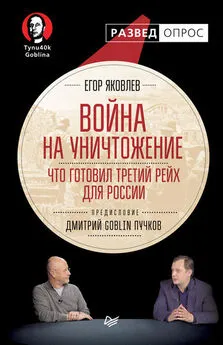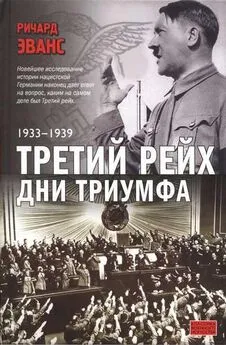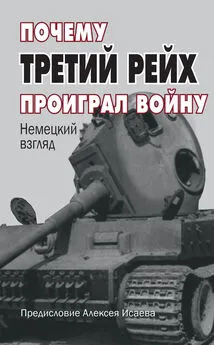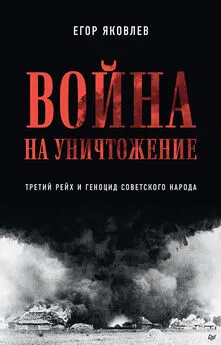Ричард Эванс - Третий рейх. Дни войны. 1939-1945
- Название:Третий рейх. Дни войны. 1939-1945
- Автор:
- Жанр:
- Издательство:ООО «Агентство прав «У-Фактория»; ООО «Издательство Астрель»
- Год:2011
- Город:Екатеринбург
- ISBN:978-5-271-36331-3, 978-5-9757-0535-8
- Рейтинг:
- Избранное:Добавить в избранное
-
Отзывы:
-
Ваша оценка:
Ричард Эванс - Третий рейх. Дни войны. 1939-1945 краткое содержание
Это заключительная книга трехтомного цикла, открывающегося книгой «Третий рейх. Зарождение империи. 1920-1933» и продолженная изданием «Третий рейх. Дни триумфа. 1933-1939».
Третий рейх. Дни войны. 1939-1945 - читать онлайн бесплатно полную версию (весь текст целиком)
Интервал:
Закладка:
724
Wägner, IG-Auschwitz, 204, 291; Rainer Fröbe, ‘Der Arbeitseinsatz von KZ-Häftlingen und die Perspektive der Industrie, 1943—1945’, in Ulrich Herbert (ed.), Europa und der 'Reichseinsatz': Ausländische Zivilarbeiter, Kriegsgefangene und KZ-Häftlinge in Deutschland 1938—1945 (Essen, 1991), 351-383; Jaskot, The Architecture of Oppression, 37-38.
725
Spoerer, Zwangsarbeit, 183-190.
726
Tooze, The Wages of Destruction, 445-446; Hayes, Industry and Ideology, 361-365.
727
Hayes, From Cooperation to Complicity, 26-71; Heusler, Ausländereinsatz. 421; Spoerer, Zwangsarbeit, 186.
728
Там же, 221-222.
729
A point first made by Carroll, Design for Total War, 245-247.
730
For an account of pre-Speer polycracy, see Müller, ‘The Mobilization’, 448-456, 630-638; also emphasized by Herbst, Der totale Krieg, 111-117; for continuing inter-institutional competition in the Speer era, see Carroll, Design for Total War, 245-247; for rivalry between Speer and the Reich Ministry of Economics, see Herbst, Der totale Krieg, 267-275.
731
Aly, Hitler's Beneficiaries, 75-179, 324-325; also Michael Wildt, ‘Alys Volksstaat: Hybris und Simplizität einer Wissenschaft’, Sozial.Geschichte, 20 (2005), 91-97, with further references. For a positive assessment of the contribution of foreign labour, see Pfahlmann, Fremdarbeiter, 226-235.
732
Harrison (ed.), The Economics of World War II, 10-11.
733
Naasner, Neue Machtzentren, 469-473. For the idea of ‘crisis management’ in wartime Germany, see Rolf-Dieter Müller, Der Manager der Kriegswirtschaft: Hans Kehrl: Ein Unternehmer in der Politik des 'Dritten Reiches' (Essen, 1999), esp. 101-103.
734
Speer, Inside the Third Reich, 446; for Sauckel in this period, see Homze, Foreign Labor, 233-239.
735
Milward, The Fascist Economy in Norway, 279.
736
Hans Umbreit, ‘Auf dem Weg zur Kontinentalherrschaft’, DRZWN/\. 3-345.
737
Там же, 3-165 (‘Stadien der territorialen “Neuordnung” in Europa’ and ‘Die vorgezogene “NeuordnFor a good general account, see Mazower, Hitler's Empire.
738
For a detailed and sensitive study of the many different and often creative ways in which people in one area, the Loire Valley in France, coped with the German occupation, see Robert Gildea, Marianne in Chains: In Search of the German Occupation 1940—1945 (London, 2002).
739
Цитируется по Vinen, The Unfree French, 53.
740
The best recent account is Jackson, France; см. Vinen, The Unfree French; Ian Ousby, Occupation: The Ordeal of France 1940—1944 (London, 1997); and the classic, pioneering study by Robert O. Paxton, Vichy France: Old Guard and New Order, 1940—1944 (London, 1972).
741
Michael R. Marrus and Robert O. Paxton, Vichy France and the Jews (New York, 1981), 23-72; Paula Hyman, From Dreyfus to Vichy: The Remaking of French Jewry, 1906—1939 (New York, 1979) and Pierre Birnbaum, Anti-semitism in France: A Political History from Leon Blum to the Present (Oxford, 1992 [1988]).
742
Marrus and Paxton, Vichy France, 177-314.
743
Friedländer, The Years of Extermination, 109-116; Longerich, Politik, 435. For the camps, see Regina M. Delacor, ‘From Potential Friends to Potential Enemies: The Internment of “Hostile Foreigners” in France at the Beginning of the Second World War', Journal of Contemporary History, 35 (2000), 361-368; more generally, on the occupied zone, Philippe Burrin, France under the Germans: Collaboration and Compromise (New York, 1996).
744
David Carroll, French Literary Fascism: Nationalism, Anti-Semitism, and the Ideology of Culture (Princeton, N.J., 1995).
745
Anne Grynberg, Les Camps de la honte: Les internes juifs des camps francais, 1939—1944 (Paris, 1991); Marrus and Paxton, Vichy France, 121-176; Renee Poznanski, Jews in France during World War II (Hanover, 2001 [1994]), 42-55.
746
Friedländer, The Years of Extermination, 169-178.
747
Longerich, Politik, 435.
748
Ahrlich Meyer, Täter im Verhör: Die Endlösung der Judenfrage in Frankreich 1940- 1944 (Darmstadt, 2005), and Barbara Lambauer, ‘Opportunistischer Antisemitismus: Der deutsche Botschafter Otto Abetz und die Judenverfolgung in Frankreich’, VfZ 53 (2005), 241-273.
749
Friedländer, The Years of Extermination, 157-178; for Dannecker’s background and deep-dyed antisemitism, see Claudia Steur, Theodor Dannecker: Ein Funktionär der ‘Endlösung’ (Essen, 1997), 14-91; for the race laws and their application in France, see Susan Zuccotti, The Holocaust, the French, and the Jews (New York, 1993), 51-64 (also 65-80 for the camps). More generally, see also the account in Jackson, France, 354-384.
750
Longerich, Politik, 434-440.
751
Gerald Schwab, The Day the Holocaust Began: The Odyssey of Herschel Grynszpan (New York, 1990).
752
Jacques Adler, The Jews of Paris and the Final Solution: Communal Responses and Internal Conflicts, 1940—1944 (New York, 1987).
753
Marrus and Paxton, Vichy France, 281-340; см. Carmen Callil, Bad Faith: A Forgotten History of Family and Fatherland (London, 2007).
754
Friedländer, The Years of Extermination, 377.
755
Poznanski, Jews in France, 237-250.
756
Там же, 303-355; Marrus and Paxton, Vichy France, 250-255; Zuccotti, The Holocaust, 103-117; Asher Cohen, Persecutions et sauvetages: Juifs et Franqais sous TOccupation et sous Vichy (Paris, 1993), 269-267.
757
Richard I. Cohen, The Burden of Conscience: French Jewish Leadership during the Holocaust (Bloomington, Ind., 1987); Cohen, Persecutions, 125-190.
758
Michele Cointet, L’Eglise sous Vichy, 1940—1945: La repentance en question (Paris, 1998).
759
Jackson, France, 221-224.
760
Witte et al. (eds.), Der Dienstkalender, 637.
761
Longerich, Der ungeschriebene Befehl, 178-179.
762
Cohen, Persecutions, 191-240, analyses changing public opinion in France; см. Jackson, France, 233-235.
763
Cohen, Persecutions, 496.
764
Jackson, France, 213-235, 389-426.
765
Martin Conway, Collaboration in Belgium: Leon Degrelle and the Rexist Movement 1940—1944 (London, 1993), 22-27, 286-289.
766
Werner Warmbrunn, The Dutch under German Occupation, 1940—1945 (London, 1963), 24-25, 32-34, 261-265; Gerhard Hirschfeld, Nazi Rule and Dutch Collaboration: The Netherlands under German Occupation, 1940—1945 (Oxford, 1988 [1984]), 5-6. Konrad Kwiet, Reichskommissariat Niederlande: Versuch und Scheitern nationalsozialistischer Neuordnung (Stuttgart, 1968) argues that collaboration with the bourgeois establishment was less successful.
767
Bob Moore, Victims and Survivors: The Nazi Persecution of the Jews in the Netherlands, 1940—1945 (Ijondon, 1997), 19-90.
768
Moore, Victims and Survivors, 146-189; Anne Frank, The Diary of a Young Girl (New York, 1995).
769
Moore, Victims and Survivors, 91-115, 195-206; Louis de Jong, ‘The Netherlands and Auschwitz’, Yad Vashem Studies, 7 (1968), 39-55; Gerhard Hirschfeld, ‘Niederlande’, in Wolfgang Benz (ed.), Dimension des Völkermords: Die Zahl der jüdischen Opfer des Nationalsozialismus (Munich, 1991), 137-163.
770
Moore, Victims and Survivors, 102-104.
771
Там же, 125-126.
772
Dan Michman (ed.), Belgium and the Holocaust: Jews, Belgians, Germans (Jerusalem, 1998).
773
Moore, Victims and Survivors, 2, 255; Maxime Steinberg, La Persecution des Juifs en Belgique (1940—1945) (Brussels, 2004), 77-108 (for economic measures) and 157-191 (for the role of the police).
774
William B. Cohen and Jörgen Svensson, ‘Finland and the Holocaust’, Holocaust and Genocide Studies, 9 (1995), 70-92; Longerich, Politik, 520.
775
Там же, 531-532.
776
Paul A. Levine, From Indifference to Activism: Swedish Diplomacy and the Holocaust, 1938—1944 (Uppsala, 1998); Friedländer, The Years of Extermination, 449, 454.
777
Jozef Lewandowski, ‘Early Swedish Information about the Nazis’ Mass Murder of the Jews’, Polin: Studies in Polish Jewry, 13 (2000), 113-127; Steven Kublik, The Stones Cry Out: Sweden's Response to the Persecution of the Jews, 1933—1945 (New York, 1988).
778
Ulrich Herbert, Best: Biographische Studien über Radikalismus, Weltanschauung und Vernunft, 1903—1989 (Bonn, 1996), 323-341.
779
Longerich, Politik, 555-558; Herbert, Best, 360-373; Leni Yahil, The Rescue of Danish Jewry: Test of a Democracy (Philadelphia, Pa., 1969), 233-284; and Levine, From Indifference to Activism, 229-245. See also the controversy between Gunnar S. Paulsson, ‘The Bridge over the Ovresund: The Historiography on the Expulsion of the Jews from Nazi-occupied Denmark’, in David Cesarani (ed.), Holocaust: Critical Concepts in Historical Studies (London, 2004), V. 99-127, and Hans Kirchhoff, ‘Denmark: A Light in the Darkness of the Holocaust? A Reply to Gunnar S. Paulsson’, там же, 128-139.
780
Цитируется по Longerich, Politik, 558.
781
Hassell, The von Hassell Diaries, 352.
782
Longerich, Politik, 558-560.
783
Mark Mazower, Salonica: City of Ghosts: Christians, Muslims and Jews 1430—1950 (London, 2004), 421-442; Longerich, Politik, 526-527, 546-547, 561-562.
Читать дальшеИнтервал:
Закладка:
